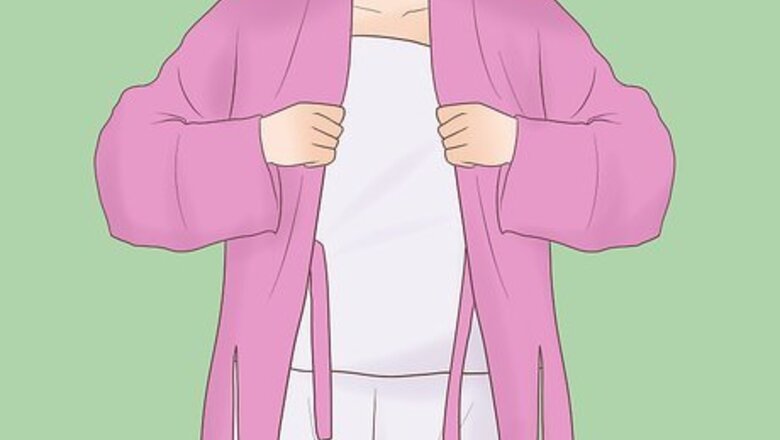
views
Putting on Hanfu
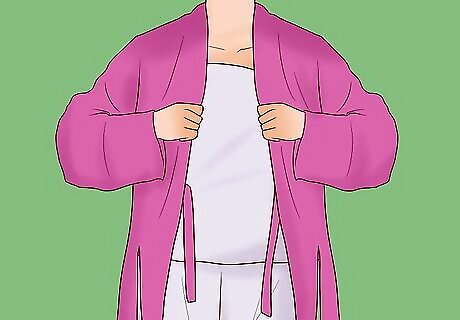
Put the blouse on over your arms so the opening is in the front. Every hanfu is made of at least 2 pieces: a short blouse and a long skirt. The blouse is open in the front, so you will pull your arms through its sleeves to position it correctly. The blouse should be loose enough that it doesn’t hug your curves but not so loose that it falls off your shoulders. If the blouse is see-through, you may want to wear a light undershirt underneath it. Most blouses in hanfu style are short so they won’t add extra bulk under the long skirt. The bottom hem should be at navel length or just a little bit longer. The History of Hanfu: “Hanfu” translates to mean “the clothing of the Han people,” and refers to the traditional garb worn by the Han Chinese. It has been around for over 3,000 years and has evolved stylistically many times. It’s often worn during special festivals, ceremonies, and events.
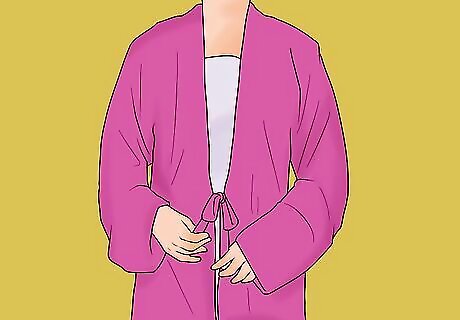
Tie the strings in the front of the blouse into bows. Some blouses have just 1 set of ties while others have multiple. Take the correlating ties from each side and tie them together in a bow, pulling the strings tightly to make sure they’re secured. This will keep the blouse from opening up and falling open. Depending on the time of year, you could wear light cotton or linen pants or undershirts under the hanfu for extra warmth. The hanfu will completely cover the undergarments.
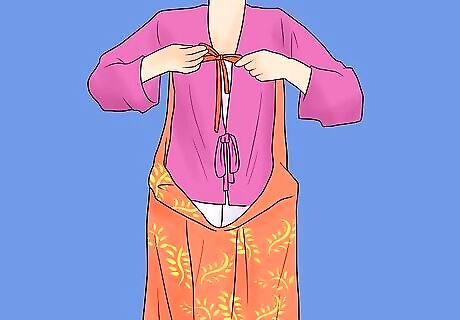
Step into the skirt and tie the back panel tightly above your chest. After you’ve stepped into the skirt, grab the panel with the shorter strings or ribbons and bring it up behind your back so it’s in line with your chest. Grab the strings from either side and pull them around and above your chest and tie them into a bow as tightly as possible. Even though there are 2 panels, a front and a back, the skirt is still made of 1 piece of fabric. The back panel has shorter ribbons than the front panel. If your skirt is a single piece rather than in panels, you’ll need to wrap it around your chest similarly to as if you were putting a towel around you. There should be ties so you can knot the skirt at your side and then knot it again once the entire piece of fabric has been wrapped around.
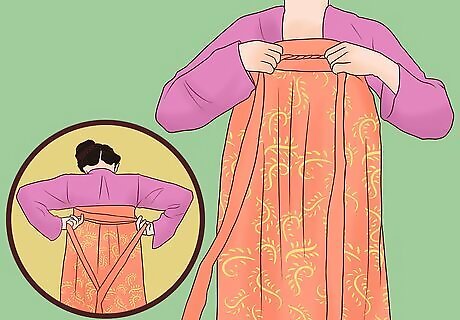
Secure the front panel by looping the ties around your back to your front. Pull up the front panel, pass its ties around your back, and tie them together in the center of your chest. Make the ties as tight as possible without making them super uncomfortable. The tighter the tie, the less likely the skirt is to come undone or fall. For added security, loop the ends of each side of the tie around the belt several times.

Wrap a hezi, a type of belt, around your chest so it covers your breasts. The hezi is generally a thicker, wider piece of fabric that helps hold the top of the skirt in place. It usually has 2 or 3 sets of straps in the back that need to be tied in bows. If you’re getting ready on your own, tie the straps in front and then twist it around so they’re in the back. The hezi normally doesn’t match the patterning of the blouse and skirt, and it can be a fun place to showcase a particularly beautiful pattern or fabric. You could get different hezis for multiple occasions to easily change the look of your hanfu.
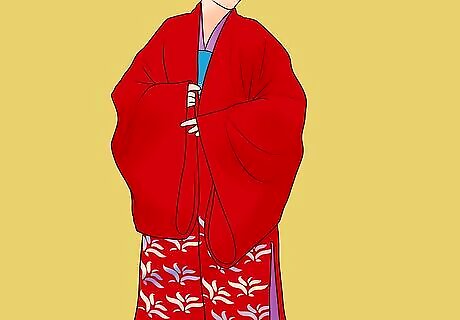
Add a large-sleeved hanfu coat for a more formal occasion. This type of coat traditionally has very wide sleeves and usually reaches down to the ground. When you put it on, tie the 2 strings on either side near the bottom of the coat in a bow. You could also leave them undone for a more open style. Consider wearing a hanfu coat if you’re attending a wedding, special party or banquet, or if you’re celebrating a big festival, like the Chinese New Year. In other styles, a large-sleeved coat called Quju Shenyi is wrapped around the body and secured with a sash tied in a bow around the waist.
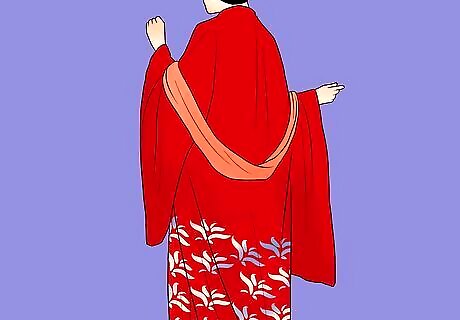
Layer a pibo scarf over your arms for extra ornamental decoration. A pibo scarf is a thin, long scarf, that is most often worn loosely around your back and over your arms. It can also be worn around your shoulders. Most pibo scarfs are sheer and very lightweight. They usually don’t match the color or pattern of the hanfu or the hezi.
Choosing a Qipao, or Cheongsam

Have your qipao tailored to fit your body perfectly. A qipao is traditionally a form-fitting dress worn to special events or to celebrate the Chinese New Year, though many people have started wearing hybrids of them for everyday wear. Regardless of where you wear your qipao, make sure to get it fitted so that it hugs your body and isn’t loose or baggy anywhere. With qipao, plan on wearing seamless undergarments both when you try on the dress and when it comes time to actually wear it out somewhere.Did You Know? The words “qipao” and “cheongsam” refer to the same style of dress. Qipao is a Mandarin word, while cheongsam is derived from Cantonese.
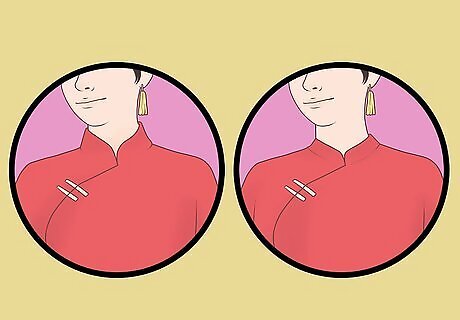
Choose a neck height that flatters your natural neckline. The Mandarin collar is one of the most recognizable parts of any qipao. They’re attached to the dress itself, but you can often find many options for the height of the collar. It can also be customized if you’re having a qipao made for a special event. Most are between 2 and 3 inches (5.1 and 7.6 cm), but you can get shorter or taller ones. For example, if you have a broader, shorter neck, you may want to get a collar that is closer to 1.5 to 2 inches (3.8 to 5.1 cm) for comfort. Shorter collars are also better if you’re wearing a more casual qipao, while high collars are more popular at special events, like weddings or other ceremonies.
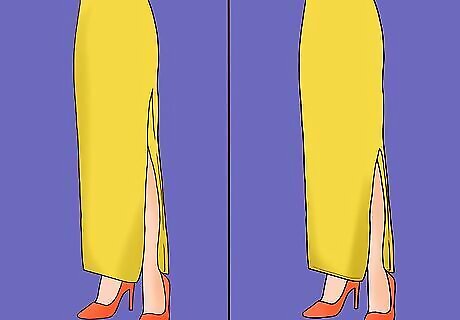
Choose the slit-length based on your comfort level. From a single-side slit to a back slit, to slits on both sides, there are a lot of options to choose from. If you want a more modest qipao, opt for a shorter slit that ends just above your knee. For a sleeker look, choose slits that reach your mid- to upper-thigh. If the skirt of your qipao is very tight, slits on both sides might make it easier to walk and sit.
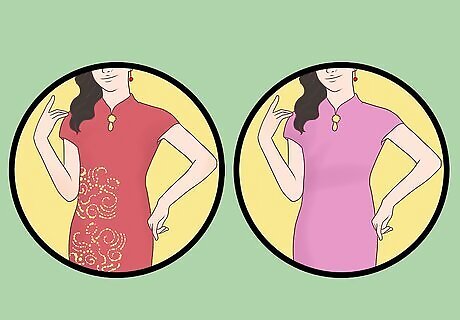
Play around with patterns and colors to liven up your qipao. You could stick with a traditional red silk qipao with gold embroidery for special events and ceremonies, or you could incorporate the qipao into your everyday wardrobe by choosing ones with a more modern flare. Consider stripes, color-blocking, and eclectic patterning when you go to buy your next qipao. Many traditional qipaos are made of embroidered pieces of silk, but more modern ones can be made of different types of fabric, like linen, satin, velvet, or even wool or cotton.
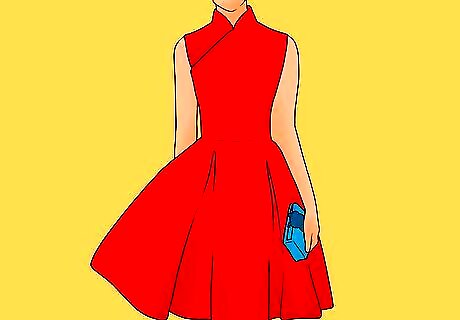
Wear a hybrid qipao to enjoy the style of the dress with a modern flare. If you prefer a looser fit of clothing, consider getting a qipao with a flared circle skirt. Get one with long sleeves or no sleeves at all if you dislike the traditional capped sleeves. You can also choose from a variety of lengths so you feel as comfortable as possible in your dress of choice. There are even qipao-style tops that you can pair with pants for a workday at the office. A traditional qipao has a short collar, capped sleeves, and a floor-length skirt with slits up one or both sides. They’re normally made of silk fabric and are embroidered with beautiful designs.




















Comments
0 comment